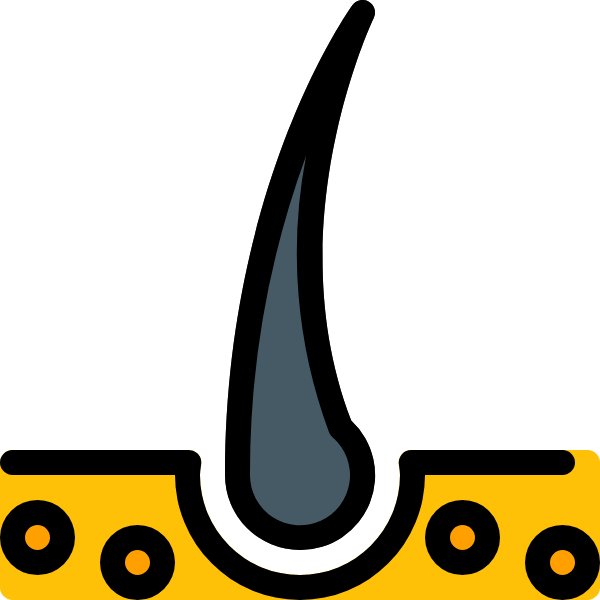Hair loss can be a very distressing condition, and many people are understandably concerned about its causes. If you’ve ever wondered whether something as seemingly harmless as pulling your hair could lead to hair loss, then this article is for you. We’ll review the evidence from scientific studies to provide an answer once and for all: does pulling hair cause hair loss?
We’ll look at how different types of traction alopecia (a type of permanent hair loss) occur in the scalp, eyebrows, or other parts of the body where there’s been repeated tension on the hairs for long periods of time. We’ll also examine what experts recommend if you’re worried that pulling your own hair might result in it falling out. By exploring these topics we will get closer to answering our initial question – so keep reading!
Types Of Traction Alopecia
Traction alopecia is a form of hair loss that occurs due to physical damage from styling, such as tight braiding. It’s most common in people with Afro-textured or curly hair, but can occur on any type of hair. There are two types: chronic traction alopecia and acute traction alopecia.
Chronic traction alopecia typically occurs over an extended period of time due to the regular use of hairstyles that involve pulling on the scalp and roots. This can be anything from tight updos, ponytails, crochets, weaves, extensions, braids and dreadlocks. If left untreated for long periods of time it may result in permanent baldness at the affected area.
Acute traction alopecia usually has a sudden onset caused by more extreme hairdressing techniques like chemical relaxers or hot combs during treatments which pull on the scalp excessively. While this kind of damage is often reversible if detected early enough, ignoring it increases the risk for permanent scarring and irreversible hair loss. With both kinds of traction alopecia proper diagnosis is key for successful treatment or prevention. Moving forward then let’s explore some potential risk factors associated with these conditions.
Risk Factors For Hair Loss
Pulling hair is an age-old habit that many of us may have experienced at one time or another. Whether it’s plucking a rogue eyebrow or twirling strands around our fingers, the damage caused by this common action can be far more serious than we realize. Hair pulling may cause temporary and permanent hair loss due to its potential for damaging the follicles responsible for making new hair growth.
Hair loss from pulling can occur in different ways, depending on how much force is used when pulling hairs out and whether they are pulled out completely or partially. Traction alopecia is an example of gradual hair thinning that occurs over time as a result of persistent tugging on the scalp with tight hairstyles such as braiding, cornrowing, ponytails and buns. Trichotillomania is a psychological disorder where people repeatedly pull their own hair out leading to bald spots on the head and other areas of the body.
Repeatedly playing with your hair can also lead to breakage which makes your locks look thinner and weaker over time. While you might think that breaking off bits here and there won’t make much difference, in reality these habits add up quickly resulting in excess shedding and weakening of the remaining strands until eventually no new growth replaces them at all.
The risks associated with hair pulling should not be taken lightly; understanding what leads to this condition and taking proactive steps towards prevention could save you significant amounts of time, money, frustration, and heartache down the line. Treatment and prevention strategies will vary based on individual circumstances, but they typically involve addressing any underlying mental health issues while simultaneously providing guidance on healthier alternatives to manage stress levels.
Treatment And Prevention Strategies
Hair pulling, also known as trichotillomania, is a psychological disorder that can lead to hair loss. It’s characterized by an urge to pull out one’s own hair from the scalp, eyebrows or other areas of the body. Though it may seem like just an irritating habit, if left untreated it can cause permanent damage and bald patches in some cases.
The good news is that treatments are available for people suffering from this condition. Cognitive behavioral therapy (CBT) has been found to be especially effective in treating trichotillomania. The goal of CBT is to identify and modify maladaptive thoughts and behaviors associated with hair-pulling urges. Other techniques such as relaxation training, hypnosis and distraction methods have also proved helpful when used alongside CBT.
Medications such as antidepressants may also be prescribed for those with severe symptoms not responding to psychotherapy alone. Selective serotonin reuptake inhibitors (SSRIs) have been found to reduce anxiety and obsessive compulsive behavior related to trichotillomania in some individuals. However, all medications should only be taken under the guidance of a physician who understands both the physical and mental aspects of the disorder.
By understanding what causes their symptoms and exploring treatment options, sufferers of trichotillomania can take steps towards regaining control over their lives without having to resort solely to medication. With dedication and commitment, progress can be made toward managing stress levels, developing healthier coping strategies, reducing uncomfortable feelings associated with hair pulling and ultimately curbing episodes of excessive hair-plucking altogether.
Conclusion
In conclusion, traction alopecia is a real condition that can be caused by pulling hair. It’s important to recognize the risk factors and take preventive measures if you’re concerned about losing your hair. By taking care of your scalp and avoiding tight hairstyles such as braids or ponytails, you can help protect your locks from thinning out. As they say: an ounce of prevention is worth a pound of cure! With proper hair care techniques, we can all keep our manes looking their best for years to come.

